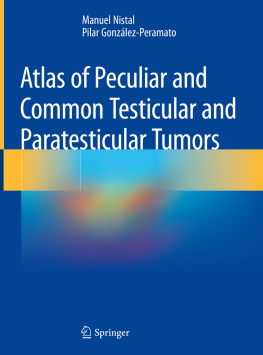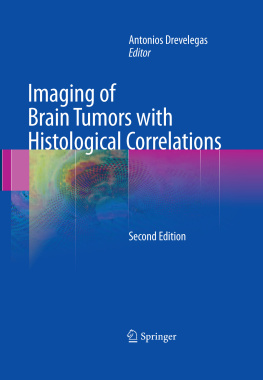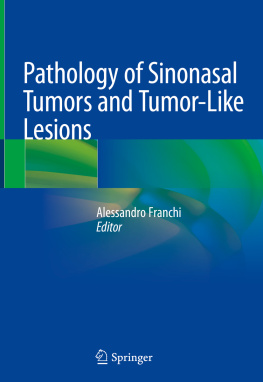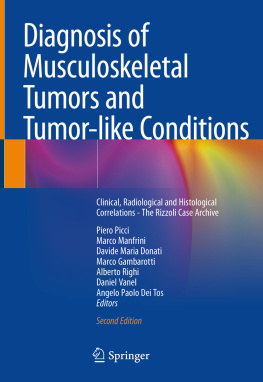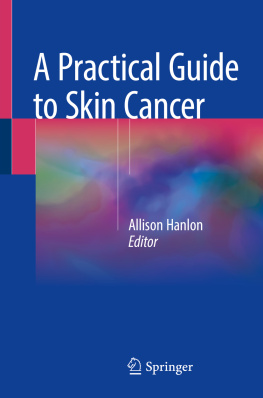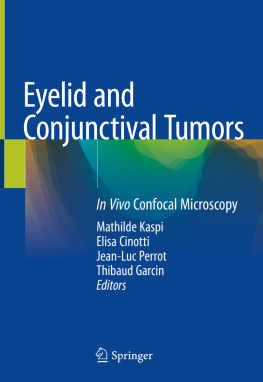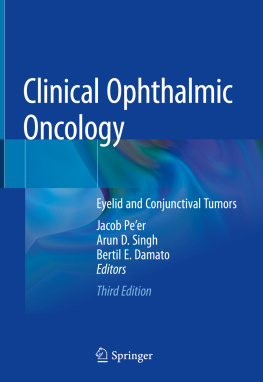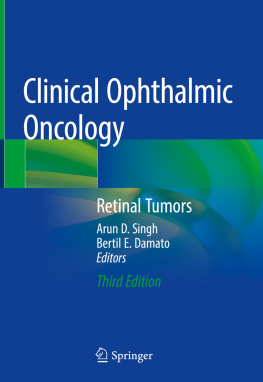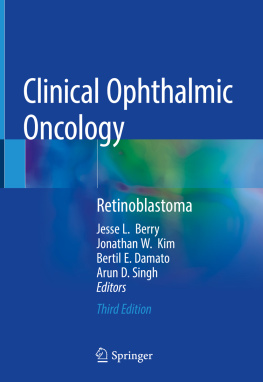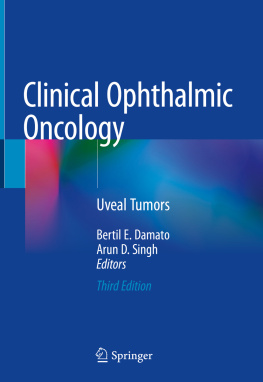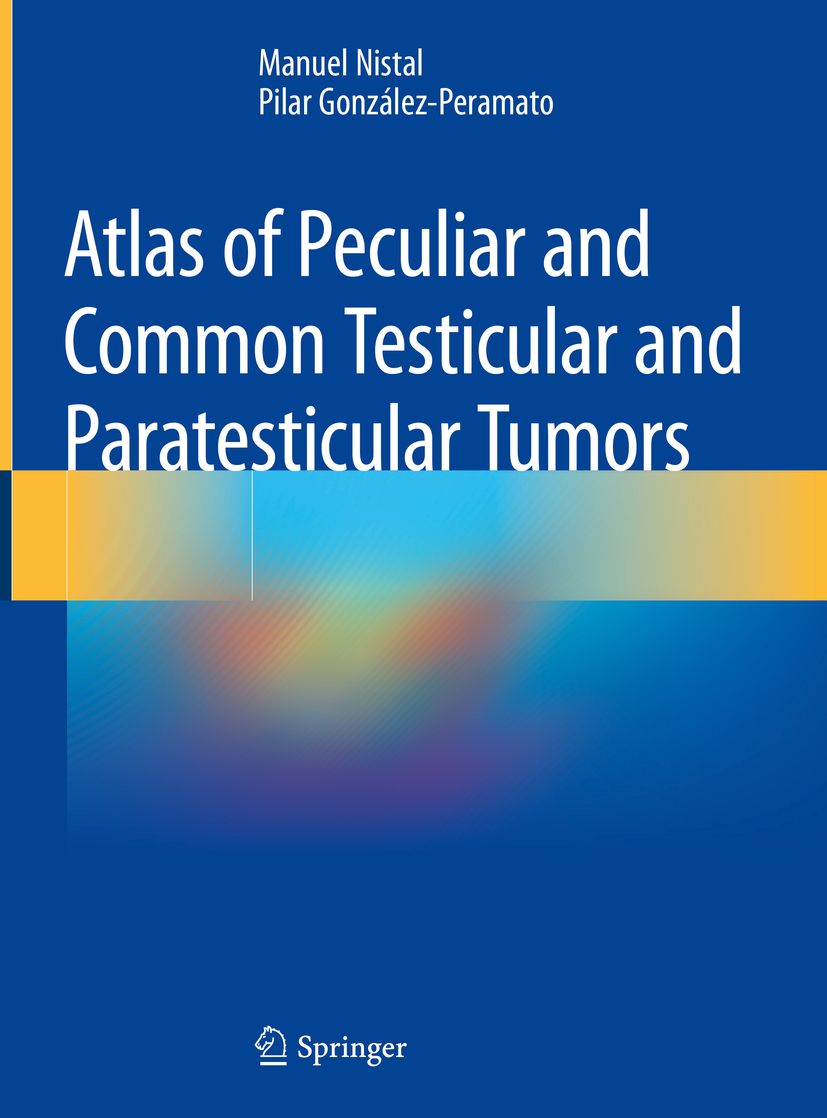Manuel Nistal and Pilar Gonzlez-Peramato
Atlas of Peculiar and Common Testicular and Paratesticular Tumors
Manuel Nistal
Department of Anatomy, Histology and Neuroscience, Universidad Autnoma de Madrid, Madrid, Spain
Pilar Gonzlez-Peramato
Department of Pathology, University Hospital La Paz, Universidad Autnoma de Madrid, Madrid, Spain
ISBN 978-3-030-19653-0 e-ISBN 978-3-030-19654-7
https://doi.org/10.1007/978-3-030-19654-7
Springer Nature Switzerland AG 2020
This work is subject to copyright. All rights are reserved by the Publisher, whether the whole or part of the material is concerned, specifically the rights of translation, reprinting, reuse of illustrations, recitation, broadcasting, reproduction on microfilms or in any other physical way, and transmission or information storage and retrieval, electronic adaptation, computer software, or by similar or dissimilar methodology now known or hereafter developed.
The use of general descriptive names, registered names, trademarks, service marks, etc. in this publication does not imply, even in the absence of a specific statement, that such names are exempt from the relevant protective laws and regulations and therefore free for general use.
The publisher, the authors, and the editors are safe to assume that the advice and information in this book are believed to be true and accurate at the date of publication. Neither the publisher nor the authors or the editors give a warranty, expressed or implied, with respect to the material contained herein or for any errors or omissions that may have been made. The publisher remains neutral with regard to jurisdictional claims in published maps and institutional affiliations.
This Springer imprint is published by the registered company Springer Nature Switzerland AG
The registered company address is: Gewerbestrasse 11, 6330 Cham, Switzerland
To my children, Rodrigo, Gonzalo, Beatriz, and Natalia
In memoriam, to my wife, Piedad
In memoriam, to my parents, Manuel and Aurora
Manuel Nistal
To my husband, Alvaro
To my children, lvaro, Teresa, and Javier
In memoriam, to my parents, Antonio and Pilar
Pilar Gonzlez-Peramato
Preface
In the young population, testicular tumors are the second cause of malignancy after lymphomas. Thus, it is not surprising that the classification of testicular tumors is periodically reviewed: different categories are revised, new ones added and reduced to variant of tumors that have classically been considered as different entities.
If in the past the most outstanding characteristic of our specialty, pathology, was to show the biological behavior of both tumoral and non-tumoral entities through morphology, in the last decades it has suddenly been enriched with the knowledge coming from different fields, such as those that genetics and molecular biology have provided. Day after day, different diagnoses are enriched by the confluence of macroscopy, microscopic morphology, immunohistochemistry, genetics, and molecular biology contributions. These contributions have been key in approaching tumoral pathology and, specifically in our field, urogenital pathology and have been the basis to recognize not only the diversity of behavior of a particular tumor type but also the birth of new entities. These changes represent a challenge when establishing a correlation between classical morphology and data from genetic and molecular biology studies on the path towards personalization of different tumor therapies.
Tumoral testicular and paratesticular pathology has not been an exception to this process, as it is reflected in the 2016 WHO blue book, which is the best guide to address this field. This publication has led many pathology departments to review their archives of testicular neoplasms to adapt them to the classification proposed by the working group members. Other publications on testicular and paratesticular tumors are broad series of a particular tumor type or case reports of tumors that present different clinical, histological, or biological behavior from what would be expected in that entity. Except for the latter type of publication, recently the least frequent one, illustrations accompanying the publications include, as it is logical, the most frequent and characteristic images, enough to make a correct diagnosis in most cases. The problem arises with tumors that have a great variety of morphological aspects; in these cases, no matter how complete the monograph is, or the different series are, that there would never be enough space so that all the different aspects of each tumor type are shown in figures. Studying a tumor that presents these unexpected images is when the problem begins for the pathologist.
Initially, the configuration of this Atlas of testicular and paratesticular tumors was focused on including tumors in three lines: (1) tumors in which important changes had occurred that affected morphological variants, (2) tumors in which genetic and molecular alterations allowed a more precise diagnosis, and (3) tumors that, due to their rarity in the testicle, could pose diagnostic difficulties. Subsequently, the content was reconsidered and it seemed appropriate that examples of different tumor categories of the testicle and paratesticular structures should also be included, in order that the reader may have a more complete view of a pathology that, except in large departments, is uncommonly seen by pathologists.
In this monograph, the reader will not find the iconography of each tumor type and its variants, which is not pursued. We have tried to avoid including images that could be called typical images that every pathologist know because they are repeated again and again in many textbooks. There are two criteria that have been taken into account when choosing most of the cases to include in this atlas: first, that the tumors were infrequent and, therefore, not familiar to everyone; and second, that the morphological pattern presented by them, although infrequent or rare, will not be surprising to the pathologist when found again.
To achieve these objectives, a total of 132 tumors or pseudotumoral lesions of the testicle and paratesticular structures have been selected. The Atlas of peculiar and common testicular and paratesticular tumors has been organized following the 2016 WHO classification in ten chapters. Chapter includes cases of metastatic tumors.
Each of the 132 cases begins with a short clinical history, as we must bear in mind that except for the age, most testicular tumors have similar symptoms. It is followed by pathological findings in which reference is made not only to the main macro- or microscopic aspects but also to the immunohistochemical or molecular techniques that facilitate the diagnosis. Each case is followed by comments in which its peculiarities and the differential diagnoses are addressed and ends with a section of selected bibliographic references. Special care, how could it be otherwise in the making of an atlas, has been taken with the figures in which the reader will see macroscopic figures, ultrasound or magnetic resonance images, or panoramic testicular sections besides histological figures.
The Atlas would not have been possible without the disinterested collaboration of different members, both staff and residents of the Pathology Department of the La Paz University Hospital (Universidad Autnoma de Madrid), as well as our colleagues from the Urology, Oncology, and Radiology Departments. Our special thanks to pathologists of other centers who have given us the material of their cases, in consultation with what the present atlas has been notably enriched. It is hoped that the present Atlas of peculiar and common testicular and paratesticular tumors will be beneficial to our reader-colleagues.

